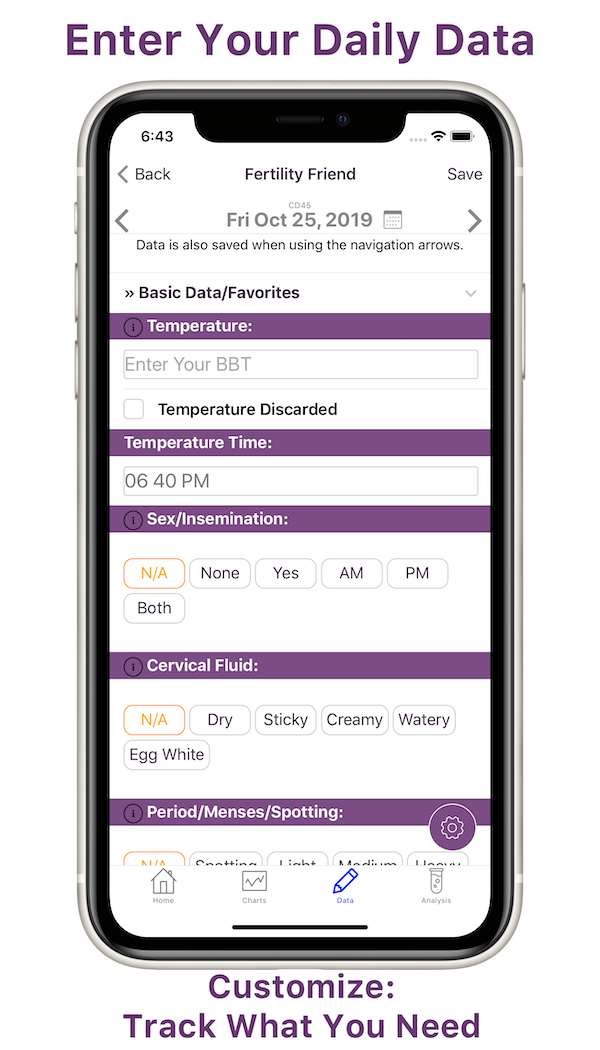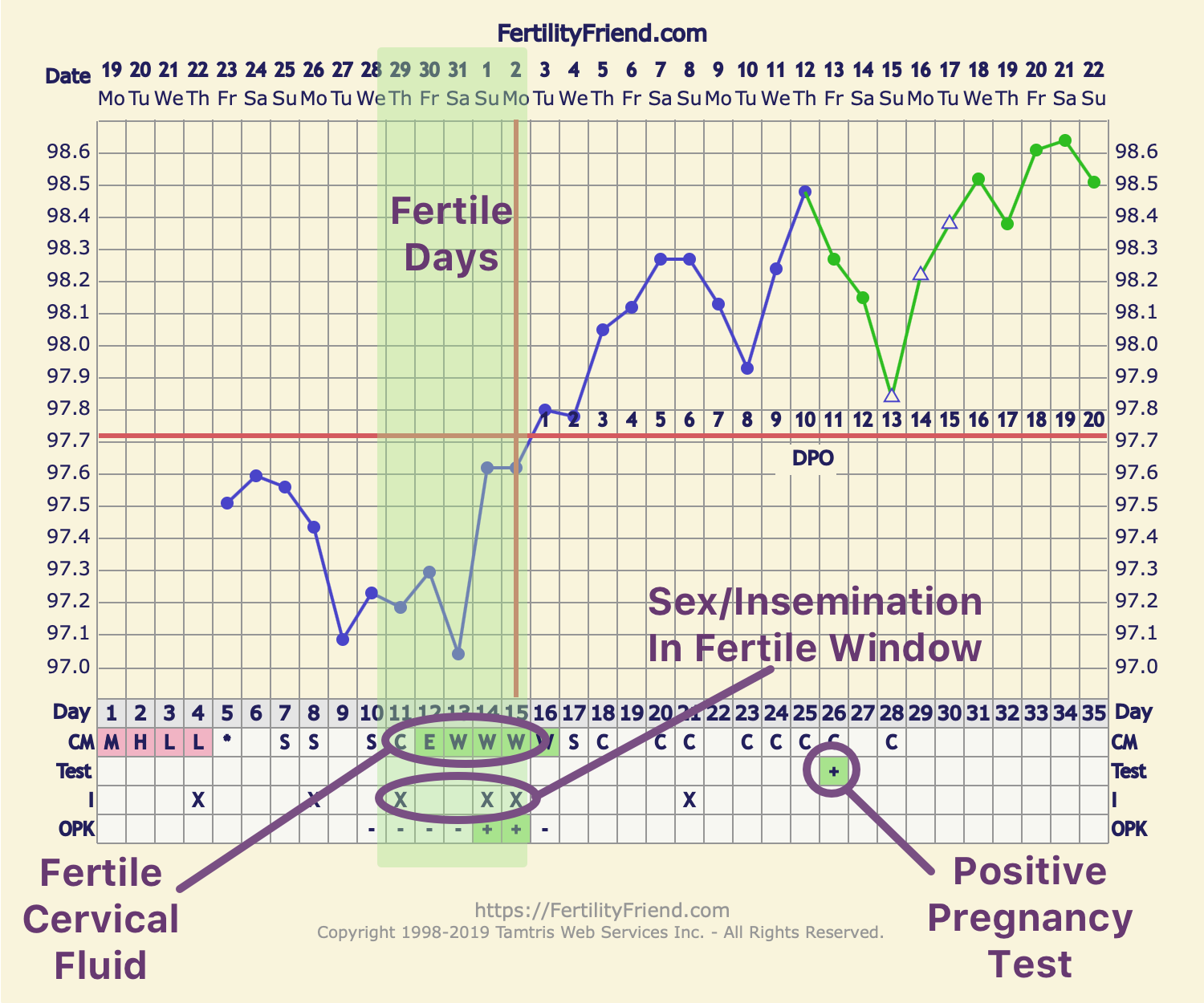Charting Essentials
Lesson 2
Lesson Objectives:
-
Very quickly see the most basic aspects of fertility charting
-
Be able to start charting your own fertility signs
Major Points in this Lesson:
-
Your menstrual cycle and your fertility chart start on the first day of full menstrual bleeding. This is cycle day one (CD1).
-
Your primary fertility signs are your basal body temperature (BBT) and cervical fluid (CF or CM).
-
To chart your fertility, you need to record your waking temperature and the time at which it was taken, your cervical fluid observations, when you have intercourse and when you have menstrual bleeding.
-
It takes just a few minutes a day to observe and record your signs.
To get started charting your fertility signs, you need:
-
A BBT thermometer (the package will say "basal" or "fertility" thermometer) available at your local drugstore or pharmacy or online. If you have a wearable device that measures temperature, that is also acceptable.
-
Willingness to invest a couple of minutes each day to observe and chart your signs.
Getting Started:
A fertility chart, like your menstrual cycle, starts on cycle day 1 (CD1).
Cycle Day 1 is the first day of your period (full red flow, not spotting).
You may wish to begin charting at the beginning of your next cycle if you don't know your LMP.
If you know your LMP and want to start right away, make sure that cycle day 1 (CD1) on your fertility chart reflects day one of your current cycle.
Tap/Click your calendar date that corresponds to the first day of your last period and record it.
Checking your primary fertility signs takes just a few minutes each day.
The essential signs to observe and record are:
-
Cervical fluid
-
Temperature (BBT)
-
Time you took your temperature
-
Intercourse
-
Menstrual bleeding

Your cervical fluid and your basal body temperature (BBT) are considered your primary fertility signs. These are the signs that are really needed to get a reliable interpretation.
Secondary signs, such as cervix position and texture, results from kits and devices and other personal observations can help offer added insight into the interpretation.
Your basal body temperature can be measured when you wake up in the morning using an inexpensive special thermometer that you can buy at your drugstore. Optionally, you may measure it automatically using a wearable device. Your temperature rises after ovulation due to increased progesterone in your bloodstream.
You can easily observe your cervical fluid when you go to the bathroom. Your cervical fluid is the fluid that is produced by your cervix as ovulation is approaching. You can see and feel it in or outside your vagina. Cervical fluid, which is sometimes called cervical mucus (CM), changes throughout your cycle depending on your fertility status. It becomes watery and stretchy, like raw egg white when you are most fertile just before ovulation.
Taking note of these observations and recording them is enough to provide the clues you need to help time intercourse appropriately to get pregnant and see when (and sometimes if) you ovulate. Other secondary optional signs can add extra insight and help to cross-check the interpretation from your primary fertility signs.
Observing and recording these fertility signs, you can see when you are fertile on a calendar and on a graph. You enter your signs and get a chart displaying your data like this:

The information can be analyzed and interpreted and the feedback lets you see when you are approaching ovulation, when you have already ovulated, when you should expect your period or a positive pregnancy test, along with other insights that will help you get pregnant and learn about your unique fertility pattern.
Charting with FertilityFriend.com or using one of Fertility Friend's Mobile Apps, you enter your daily observations about your fertility signs on your own personal account on an easy-to-use data entry form.
The feedback, interpretation and analysis is interactively and automatically provided for you. The analysis will tell you the best time to have intercourse to maximize your chances each cycle. It will show you when you are fertile, when you have ovulated, when you are no longer fertile, when to expect your period if you are not pregnant, and when you can expect a reliable pregnancy test result.
Next Lesson: Your Cycle Phases
Note: Please check this lesson within the app to access the lesson quiz.

